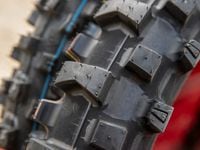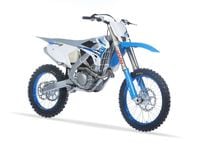Hardly a blip on the map until recent years, a small manufacturer out of Spain called Gas Gas has been steadily building a strong presence in the US. Already with a niche market in trials bikes, Gas Gas has put some serious effort into their off-road R&D;, coming out with some competitive bikes. Everything we've tested so far (2005 EC300, FSE450 and EC200) has surprised and intrigued us.You may remember seeing the first test of the EC300 Dealer Edition in the December '04 issue; at first ride, the EC300 two-stroke impressed us. So much so that we pitted it head-to-head with the venerable KTM 300 EXC where we announced a tie (April 2005 issue). Don't believe it? I might not have either if I hadn't had the opportunity to throw a leg over the Gas Gas myself. I immediately fell in love with the EC300, and a few weeks later, it was in my garage as my long-term bike.The EC's versatility was the basis of its appeal to me (aside from my being a two-stroke aficionada). I'm a go anywhere, try anything type of rider, and wanted a bike that could do the same. The EC300 proved to be very multitalented. We took it everywhere including Montana, the mountains of Colorado, California Deserts, several trips to Baja Mexico and trail riding everywhere in between. And everywhere we took it, it seemed right at home.I even spent some summer nights at the track with it. With the MX ignition and black box of the Dealer Edition, the EC adapted to the motocross track with ease. I experienced another advantage to the Gas Gas' versatility at dusk when the track was closing. I pulled up to the flagger and asked if I could do another lap since I had a headlight. "Sure, go ahead!" he said."What kind of YZ is that?" was the number one question I was asked. "Oh yeah, I saw one of those in Dirt Rider," people would say when I told them it was a Gas Gas. The KTM 300 EXC owners I came across always showed the greatest interest in it (then they'd look at me as though now we had to fight). It used to be that if you were a two-stroke fan looking for an off-road bike, the obvious answer was KTM. But now that answer isn't quite as obvious.The 300 EXC is a great bike, praised for its solid two-stroke power, and its ability to crawl at low-speeds. The Gas Gas has the same ability to creep along at bogging speed, but builds power with a bigger kick to it. The KTM has steady, linear delivery while the Gas Gas retains that characteristic two-stroke snap, which, if you prefer the camless variety, is why we ride them, right?Although it's a few pounds heavier than the KTM on the scale, the Gas Gas feels lighter on the trail. The lower center of gravity combined with the flickable motor results in a quick-responding, agile ride. I always felt able to put it right where I wanted it. The hydraulic clutch makes it all the more maneuverable, and while the low end isn't as strong as the KTM's, it was still strong enough to make me get lazy with shifting. It's plenty amenable to being lugged around at low speeds all day, but is always ready to jump out of its skin on command. Simply twist the throttle, snap the magic clutch and hang on.Ergonomically it's tight and centered, and although Karel Kramer would say the seat is too hard, I found it perfectly comfortable (but I suppose Karel makes a bigger dent in it than I do). Another ergonomic feature that makes the Gas Gas feel light are the handles in the side panels. A trivial detail? Perhaps. But while I'm trying to lift the bike out of the boulder pile I just lodged it in during the Tecate Hare Scrambles, how quickly it becomes a major detail. I always felt confident on it, knowing I could get through anything even if it meant lifting or dragging it, my small stature notwithstanding.At trail speed, the EC handled effortlessly. The front end stayed planted and it always felt stable, but I did find the suspension a bit too harsh. The 45mm Marzocchi Shiver fork has a rough edge to it, and though it isn't sprung for 135lb rider, even 200lb testers find it stiff. At higher speeds (and God-forbid, rocky or choppy), the front end became downright unstable under my light weight. I experienced a death-defying front-end swap off the start of the Elsinore GP that I never care to repeat again. Revalving the suspension would have been most effective, but letting out the rebound and compression, and bleeding the forks regularly kept things manageable. Even with this issue, I still found the EC a willing accomplice in the desert, where it racked up the majority of its miles.My only other grouse is the EC's rattrap of a kickstand (which actually came separately on our bike). When you inevitably receive a solid rap in the shin from merely standing too close to the bike, it's enough to make you want to send the whole thing off a cliff.Even with these few gripes, the EC300 scored high in performance, which brings us to the question of the hour: How durable is it? When I brought it home for the year, I thought I'd soon find out.The first victim was the aluminum outer sub-frame (under the rear fender), which was bent after cart wheeling the bike (damn rain ruts...). Rather than replace it, and most likely bend it again, it was easier to remove it along with the taillight. Filing a hole in the rear fender under the seat was the only modification necessary to unplug and remove the whole portion. Plus, now it looked like less of a dual sport, and more like an MXer.I noticed a rattling in the gas tank after a few months which prompted me to remove it and find out what on earth could have gotten in there. It was the ball bearing from the gas cap. The cap was designed with the express purpose of preventing backsplash, but personally, I'd rather deal with a few drops of gas than have to tear down the bike to fish out a delinquent ball bearing. We replaced it with an identical cap, and I didn't have any problems with the second one.Toward the end of the year, I noticed a broken exhaust mount on the sub-frame. It held together for another 200-miles through Mexico before we got around to repairing it, which wasn't difficult--a $10 weld. But while wrenching on the bike, something struck me as odd. Pulling off the sub-frame, I came across a half-inch bolt where it connected to the frame. A half-inch bolt? Isn't this bike from the home of the metric system? Where the SI system of measurement is all but blasphemous?With no other major mechanical issues, the EC held up very well after a year (and a half). It never left me looking for power, and the compression stayed strong. The magnetic oil plug showed some metallic slivers on the last oil change, which prompted me to check the clutch for wear, but the clutch plates and basket were in excellent shape.Even with a truly great bike, there are understandable hesitations in buying outside the "Big Five." Two major factors are the dealer network and aftermarket availability. True, there aren't a lot of aftermarket parts for the bike, but the dealer network in the U.S. might surprise you. Remember that Gas Gas has had a niche in the trials market for some time now. They have a network of over 80 dealers in the U.S. Visit www.gas-gas.net for a list.The limitation of aftermarket parts, however, is a noticeable drawback. But the good news is that little (if anything) is needed. Our EC Dealer Edition came fully loaded with Excel rims, hydraulic clutch, Marzocchi fork, Ohlins shock, FMF Fatty pipe and Turbine Core spark arrestor/muffler, Hebo handlebar, grips, hand guards, headlight and foot pegs. The only aftermarket mod I really longed for was a larger tank. At a mere 2.2 gallons, I found myself limping back to the truck on reserve several times.So who should buy this bike? As Jimmy Lewis said in his first test of the bike: "A serious rider with racing on his program." If you're looking for a do-it-all bike, don't plan to make a lot of aftermarket mods, and enjoy being unique, definitely consider it an option. The Gas Gas EC 300 (and 200 that we've also since tested) has certainly proven itself a worthy competitor in today's off-road market.
Latest
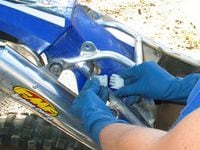
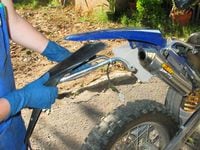
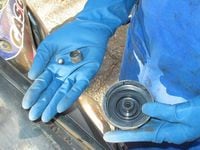
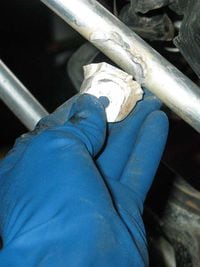
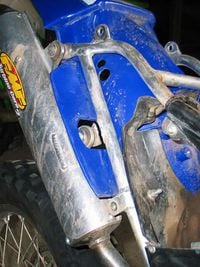
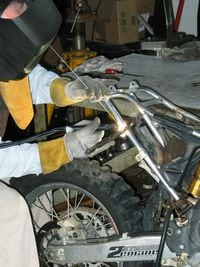
/cloudfront-us-east-1.images.arcpublishing.com/octane/PGDRMBXTKRGXRMEG6V44XCNXVQ.jpg)
/cloudfront-us-east-1.images.arcpublishing.com/octane/4YKESZJV4NDHPAOH4HITU7B52A.jpg)
/cloudfront-us-east-1.images.arcpublishing.com/octane/BZOFBHJS4FEINH5LGU7H2IDOZU.jpg)
/cloudfront-us-east-1.images.arcpublishing.com/octane/XXNQVQXSI5BFRC2IP2QC5YZ5D4.jpg)
/cloudfront-us-east-1.images.arcpublishing.com/octane/5GNZUHLUQZB37G6YOQEQNQ6VUI.jpg)
/cloudfront-us-east-1.images.arcpublishing.com/octane/2RSCK6OA7VGAPNNIV3PRFSIYEU.jpg)
/cloudfront-us-east-1.images.arcpublishing.com/octane/TBIAOTHQEVAWRH4RI6QHPUO5PY.JPG)
/cloudfront-us-east-1.images.arcpublishing.com/octane/OB2TZF3FIBDZHHYHJZ6LRHR3S4.jpg)
/cloudfront-us-east-1.images.arcpublishing.com/octane/DZ2HBSSXKBEZLGE574PHVN4WYI.jpg)
/cloudfront-us-east-1.images.arcpublishing.com/octane/5BWOS5DC5FHHPHLVU43RSA5BTE.jpg)
/cloudfront-us-east-1.images.arcpublishing.com/octane/I3MFYOGNRFG3TPJQ6S7DHVCCQM.jpg)
/cloudfront-us-east-1.images.arcpublishing.com/octane/6LEF2ZUVXFB3ZFYRIP7LI5TZSQ.jpg)
/cloudfront-us-east-1.images.arcpublishing.com/octane/XXYEOEIX6FASTJCWHM5354VR5Q.jpg)
/cloudfront-us-east-1.images.arcpublishing.com/octane/NJWIDU775NECBOSYOGESM6OIMY.jpg)
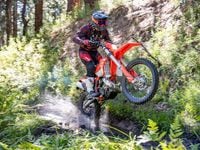
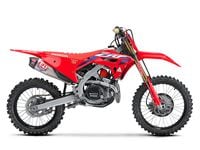
/cloudfront-us-east-1.images.arcpublishing.com/octane/322NRYLOUVD2FP72XICUQDEUTY.jpg)
/cloudfront-us-east-1.images.arcpublishing.com/octane/TT7Y2HUFOFF3RK4BQBMIFR7WGU.jpg)
/cloudfront-us-east-1.images.arcpublishing.com/octane/M23QJHVQ2ZDYPH5FZCBQJ2KXLA.jpg)
/cloudfront-us-east-1.images.arcpublishing.com/octane/HHQFFZYU6FFHTFSQRMPPYT35HU.jpg)
/cloudfront-us-east-1.images.arcpublishing.com/octane/7FCUDZHB3JBIHDW72FQBWIMBAU.jpg)
/cloudfront-us-east-1.images.arcpublishing.com/octane/X2C5PKAJAVDDXK6HNVQXT2Z6EE.jpg)
